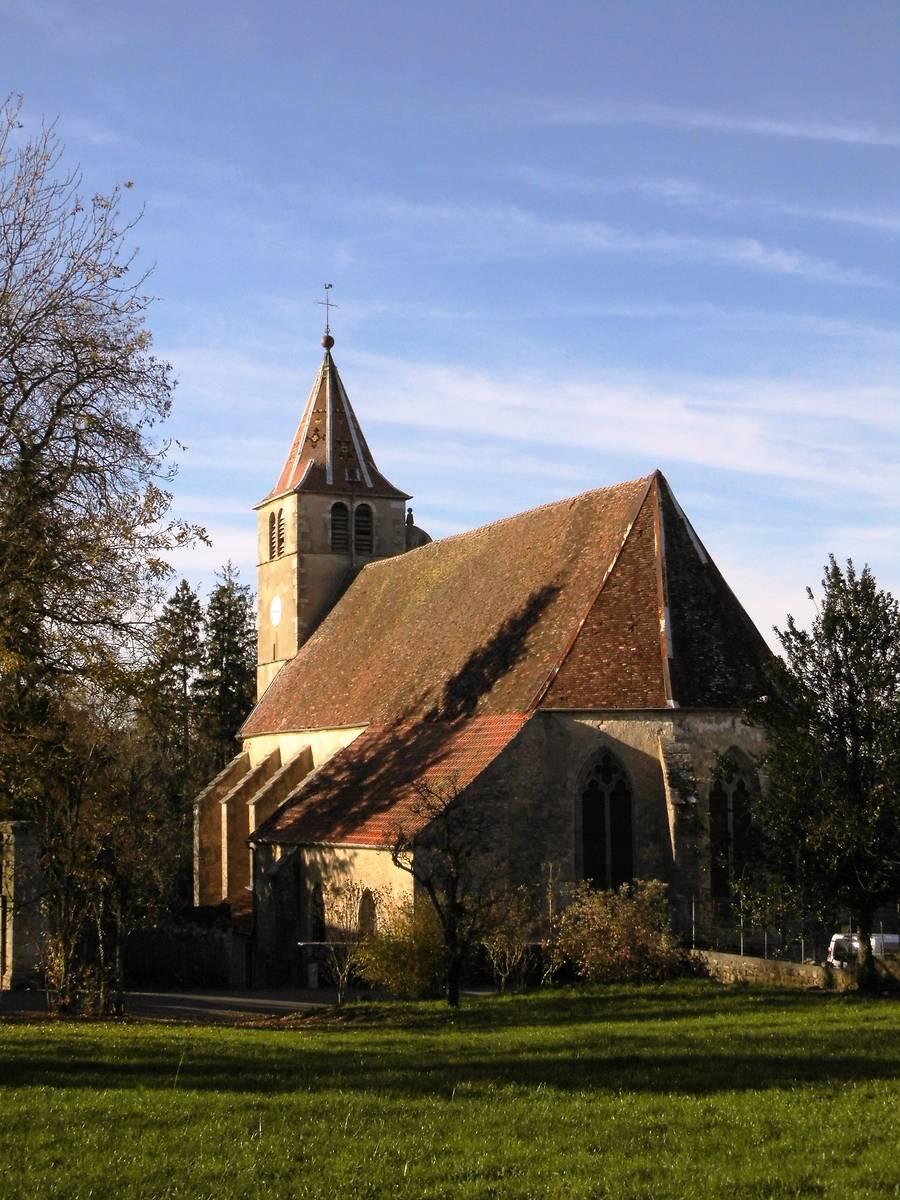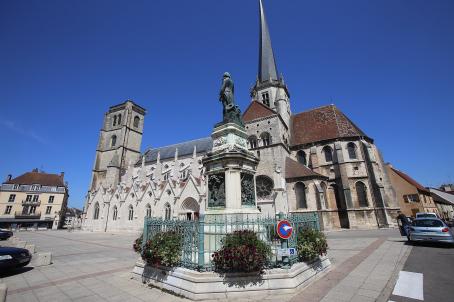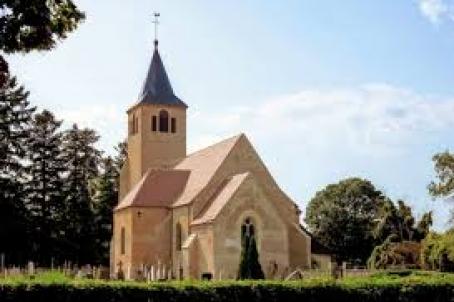Church of Saint-Pierre
The Saint-Pierre church is located in Menotey, in Burgundy-Franche-Comté. It was built in the Middle Ages and modified in the XVI-XVII and XIX century. In 1354, the church was listed among the outbuildings of the priory of Saint-Vivant, and dependent on Cluny. The polychrome entrance door, interior Burgundy paintings and sculptures, the pulpit and tombstones are remarkable.
About this building
The Church of Saint-Pierre is located in Menotey, in Burgundy-Franche-Comté. The building, which contains within its parish the three villages of Menotey, Gredisans and Rainans, is the emblematic of this region, in which sarcophagi and a Gallo-Roman stele have been found. In 1354, the church was inlcuded among the outbuildings of the priory of Saint-Vivant, that was dependent on Cluny; it was then transferred to the Priory of Jouhe, before passing under the tutelage of the Jesuits of Dole in 1601.
Built in the Middle Ages, the church was modified in the sixteenth-seventeenth and nineteenth century. The nave (17th century) built in the classical Gothic style with four bays, rests on foothills. The Franc-Comtois square bell tower was built in 1604 and is 5 floors high. It has a roof adorned with glazed tiles and is topped with a rooster. It hosts 2 bells and a nice clock mechanism signed Ungerer. The 2-span choir dates from the sixteenth and seventeenth century. It is inspired by the Chapel of the College Saint Jerome of Dole. A chapel was added to the South in 1577 by Pierre Piard, whose name is inscribed on the key; another two span chapel was added in the seventeenth century. The wall separating these two chapels was destroyed by the Priest Boillon (1822-1867).
The entrance gate, remarkable for its polychromy, is reminiscent of the Renaissance and the Collegiate Church of Dole. The church contains several remarkable statues, including a 16th century Saint Bernard, a Saint Vernier, patron saint of winegrowers, and a Saint Louis of the 15th century. You can also admire Burgundy paintings and sculptures, a pulpit and tombstones.






